 Our World
Our World  Our World
Our World  Movies and TV
Movies and TV The 10 Coolest Stars to Set Sail on The Love Boat
 History
History 10 Things You Didn’t Know About the American National Anthem
 Technology
Technology Top 10 Everyday Tech Buzzwords That Hide a Darker Past
 Humans
Humans 10 Everyday Human Behaviors That Are Actually Survival Instincts
 Animals
Animals 10 Animals That Humiliated and Harmed Historical Leaders
 History
History 10 Most Influential Protests in Modern History
 Creepy
Creepy 10 More Representations of Death from Myth, Legend, and Folktale
 Technology
Technology 10 Scientific Breakthroughs of 2025 That’ll Change Everything
 Our World
Our World 10 Ways Icelandic Culture Makes Other Countries Look Boring
 Our World
Our World 10 Ways Your Christmas Tree Is More Lit Than You Think
 Movies and TV
Movies and TV The 10 Coolest Stars to Set Sail on The Love Boat
 History
History 10 Things You Didn’t Know About the American National Anthem
Who's Behind Listverse?

Jamie Frater
Head Editor
Jamie founded Listverse due to an insatiable desire to share fascinating, obscure, and bizarre facts. He has been a guest speaker on numerous national radio and television stations and is a five time published author.
More About Us Technology
Technology Top 10 Everyday Tech Buzzwords That Hide a Darker Past
 Humans
Humans 10 Everyday Human Behaviors That Are Actually Survival Instincts
 Animals
Animals 10 Animals That Humiliated and Harmed Historical Leaders
 History
History 10 Most Influential Protests in Modern History
 Creepy
Creepy 10 More Representations of Death from Myth, Legend, and Folktale
 Technology
Technology 10 Scientific Breakthroughs of 2025 That’ll Change Everything
 Our World
Our World 10 Ways Icelandic Culture Makes Other Countries Look Boring
10 Incredible Images of Death
Inspired by the brilliant book “The Empire of Death” and our own deep love of all things morbid and creepy we are presenting this list of 10 incredible images taken from ossuaries and charnel houses around the world. This is a truly macabre tour around Europe’s most famous places of rest for the dead.
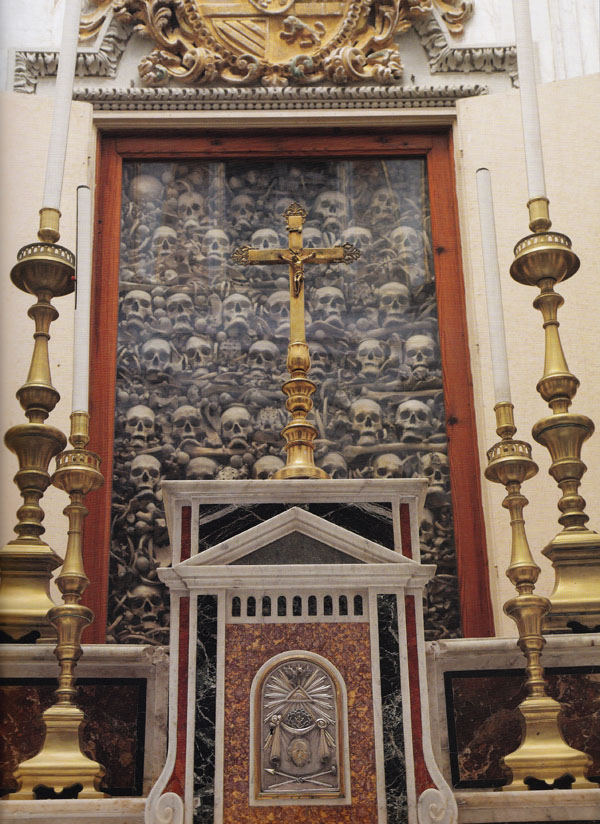
In the Ossuary Chapel of the Cathedral of Otranto, Italy, the remains of the victims of a massacre in 1480 preside over the high altar straddled by rich gold candlesticks. The most famous victim of the Massacre was Antonio Primaldo who was the first to lose his head to the invading Turks. As soon as his body hit the ground it stood upright – headless – and even an ox could not move him. He remained standing until the last victim was murdered.
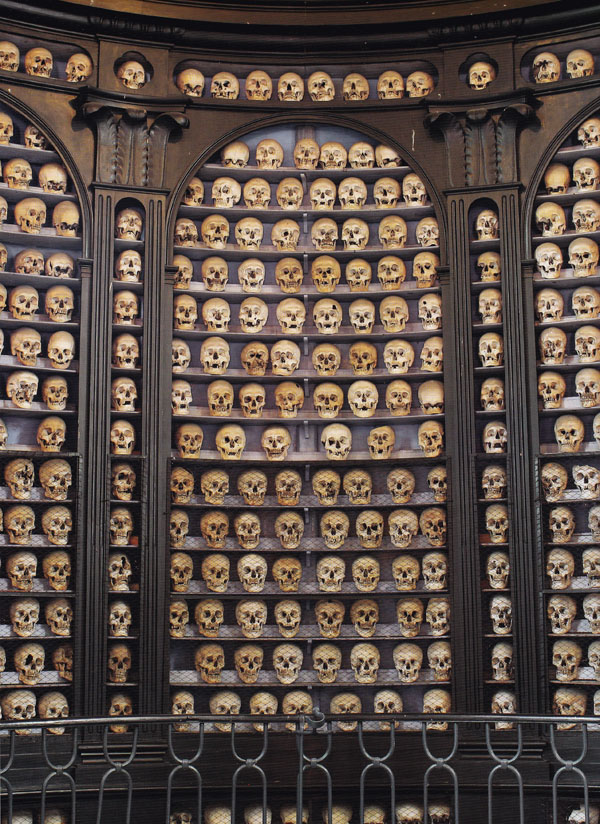
The Ossuary Chapel of San Martino Della Battaglia in Italy is the most ordered of all the bone houses on this list. Row upon row, column upon column of human remains rest in perfect order as if they were books in a macabre library. In all there are 2,619 deceased here with 1,274 skulls.
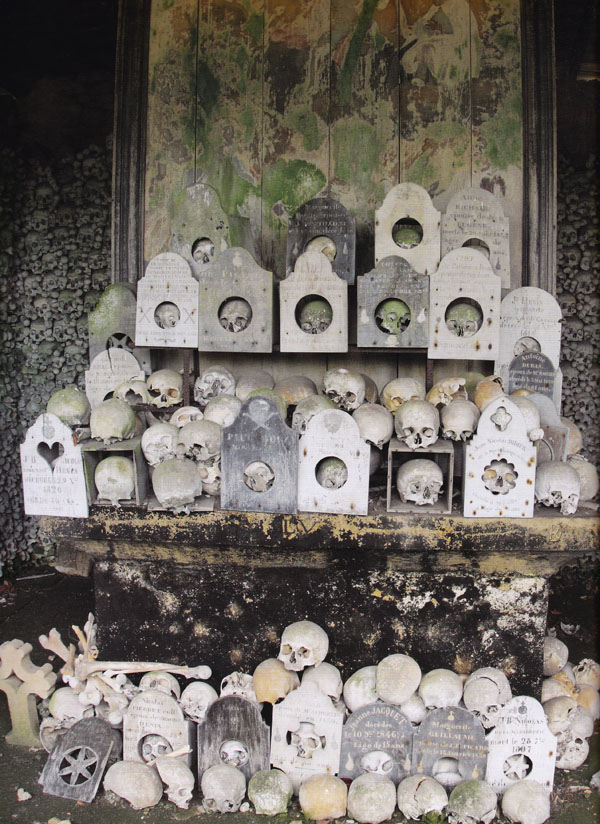
By no means the most extravagant collection of bones on this list, the St Hilaire cemetery in Marville, France gets its beauty from simplicity. It is unique in that may of the skulls are housed in small cabinets inscribed with funerary inscriptions.
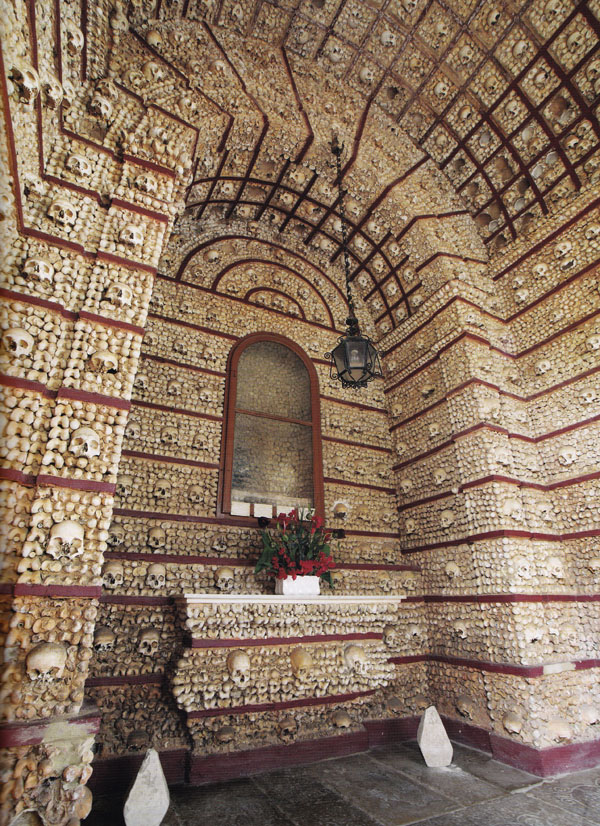
The Chapel of Bones is in the Church of Nossa Senhora do Carmo in Faro, Portugal. In addition to the walls and ceilings of bones of members of the religious Carmelite order, death is even found underfoot where the paving stones are headstones for the deceased priors and local dignitaries.
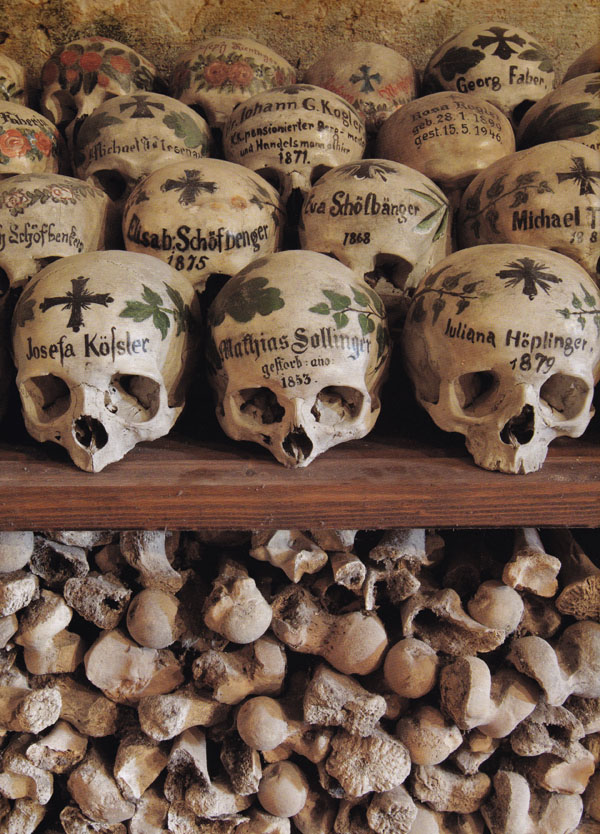
The skulls at the Chapel of St Michael in Hallstatt, Austria are famous for having been painted. The painted skulls are almost all male as they were outlived by their wives who would decorate them. Unfortunately the wives’ remains were left to their children who were less concerned with decorating the dead so they remain unpainted.
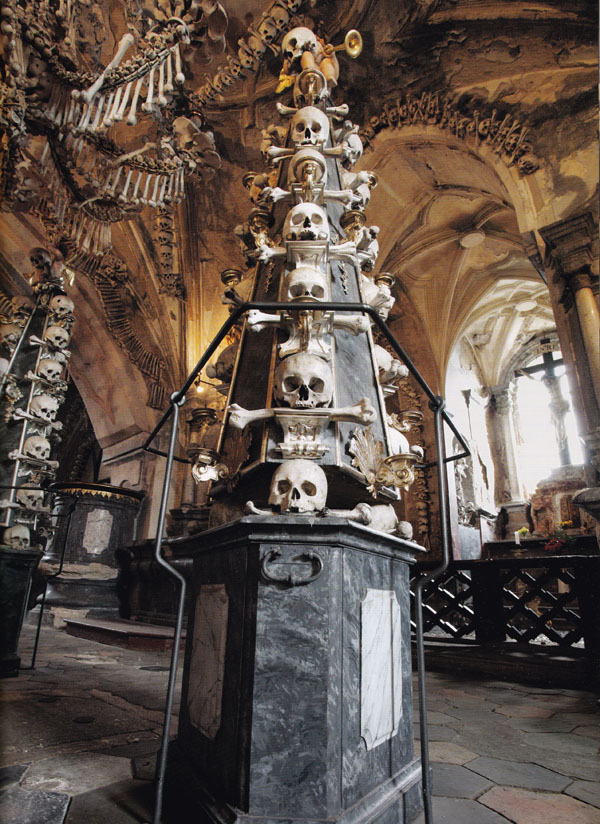
The Sedlec Ossuary (Ossuary of All Saints) in the Czech Republic is one of the most famous bone houses in the world. It doesn’t just lay the bones to rest – it uses them as extravagant deathly decorations. It is especially famed for the huge chandelier made entirely of human remains – part of which can be seen in the top left of this photograph.
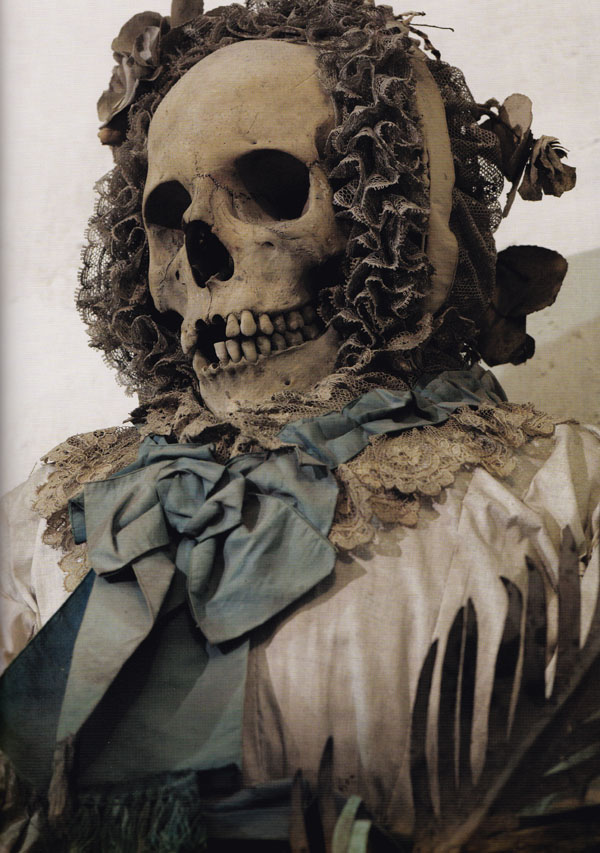
This bonneted lady can be found in the Chapel of Virgins in the Crypt of the Monastery of Santa Maria Della Pace in Palermo, Italy. She is one of four virgins placed on a ledge holding palm fronds signifying the triumph of faith.
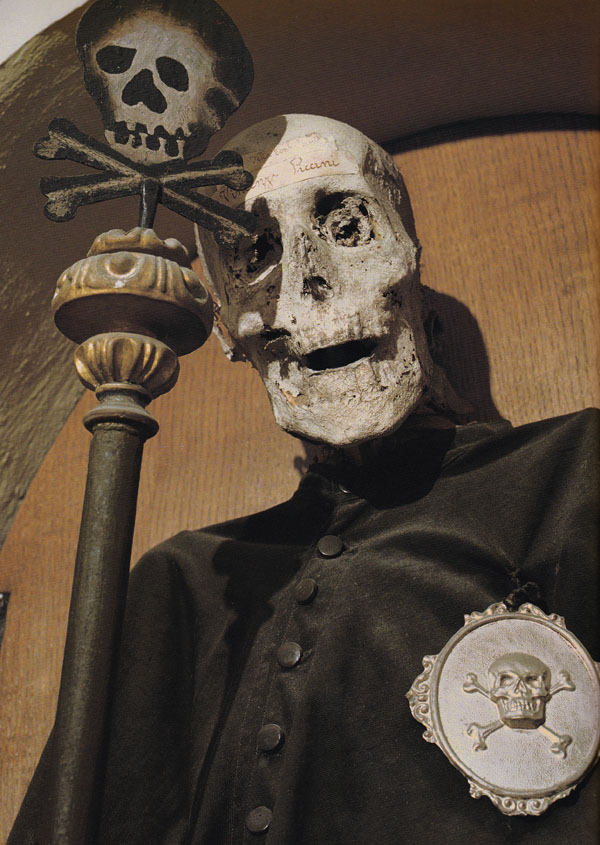
Vincenzo Piccini is the only clothed mummy in the Chiesa Dei Morti of the Confrternity of Buona Morte in Urbania, Italy. He is dressed in the robes of the religious order he was a member of and he wears the silver badge of death.
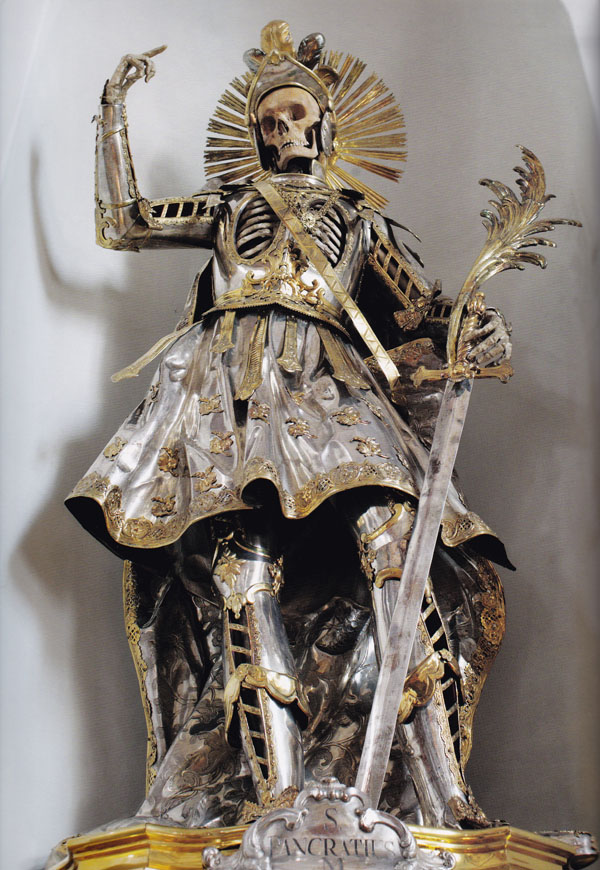
The Bones of St Pancratius are found at the Church of St Niklaus in Wil, Switzerland. He was originally robed in clothes by nuns in the late 1600s but in 1777 – the centenary of his bones arriving in Wil – he was dressed in this magnificent commissioned suit of armour.
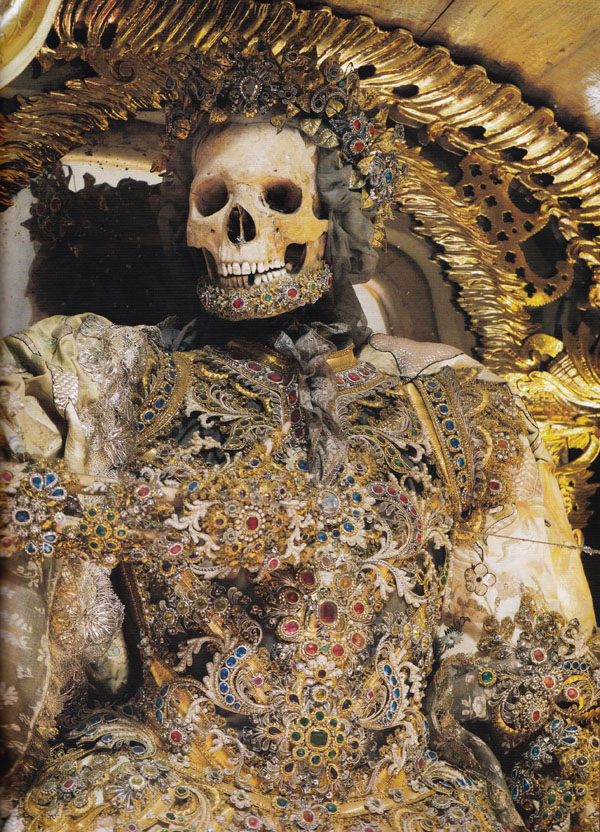
St Gratianus is enrobed in rich jewels and fine fabric befitting his state as a martyr. It is known he died for his faith because his bones stand above a chalice filled with dried blood. His remains are on display in the Basilica of Waldsassen in Germany.








